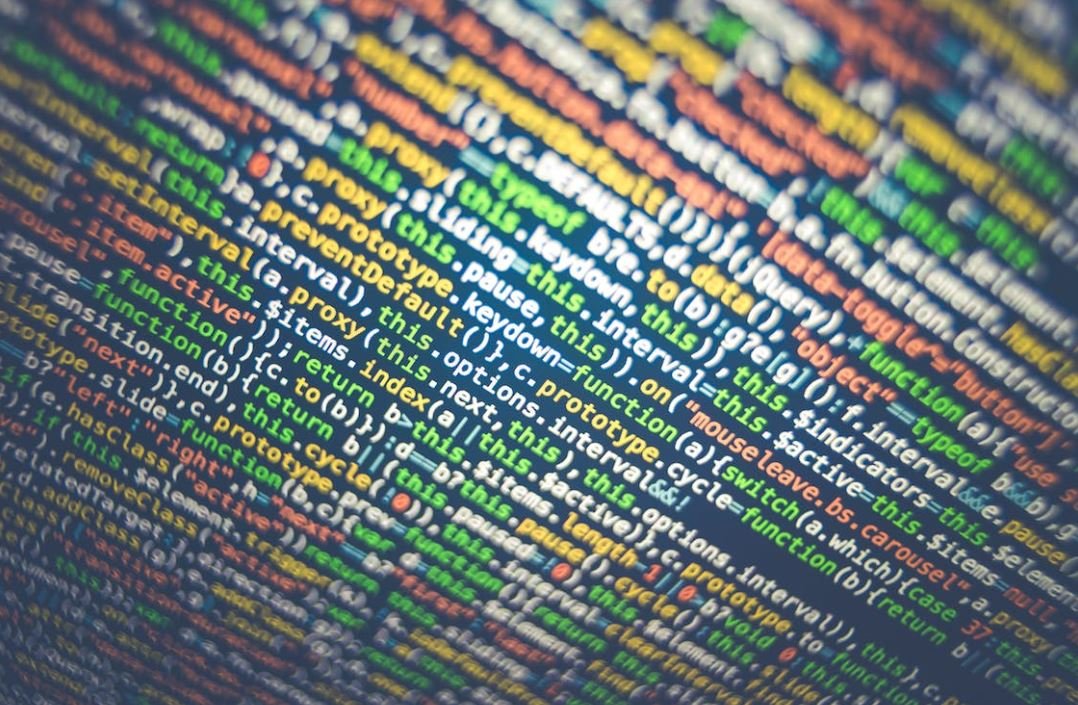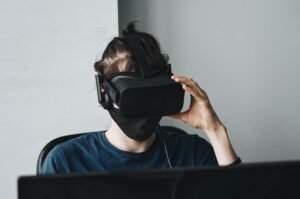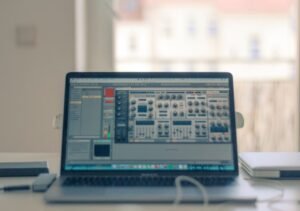Production Possibilities Curve Definition Economics
The Production Possibilities Curve (PPC), also known as the Production Possibility Frontier (PPF), is a graphical representation of the different combinations of goods and services that an economy can produce given its limited resources and technology. It illustrates the concept of trade-offs and opportunity cost in economics.
Key Takeaways:
- The PPC shows the maximum possible output that can be produced with the available resources and technology.
- Points on the PPC represent efficient and attainable production combinations.
- Points inside the PPC indicate underutilization of resources, while points outside the PPC are currently unattainable.
- The PPC is usually concave, representing increasing opportunity costs as an economy specializes in producing a specific good or service.
- The PPC can shift due to changes in resources, technology, or economic policies.
The PPC is based on the principle of scarcity, which means that resources are limited and must be allocated effectively to produce goods and services. The curve is often depicted as concave to show that resources are not equally suited for the production of all goods and services. As an economy specializes in producing more of a particular good or service, the opportunity cost of producing additional units of that good or service increases. This is known as the principle of increasing opportunity cost.
Understanding the PPC helps economists and policymakers make informed decisions about resource allocation and economic policies.
Table 1: Examples of Production Combinations
| Goods/Services | A | B | C | D | E |
|---|---|---|---|---|---|
| Food | 10 | 8 | 6 | 4 | 2 |
| Shelter | 0 | 2 | 4 | 6 | 8 |
The table above demonstrates five different production combinations an economy could achieve, with A being the most focused on food production and E being the most focused on shelter production. As more resources are allocated to one good, there is a trade-off in terms of producing less of the other good.
Changes in resources, technology, or economic policies can shift the entire PPC. For example, a technological advancement could increase the efficiency of production, shifting the curve outward. Similarly, an increase in available resources, such as an influx of immigrant workers, could also expand the PPC.
Table 2: Shifts in the Production Possibilities Curve
| Factors | Shift Direction |
|---|---|
| Increase in resources | Outward |
| Technological advancements | Outward |
| Natural disasters | Inward |
| War or conflicts | Inward |
The PPC provides a framework for analyzing efficiency, opportunity cost, and resource allocation. It helps economists and policymakers understand the trade-offs involved in producing goods and services in a society.
Table 3: Factors Affecting the Production Possibilities Curve
| Factors | Effect |
|---|---|
| Population growth | Can shift the PPC outward due to more available labor resources. |
| Investment in education and technology | Can shift the PPC outward by increasing human capital and efficiency. |
| Natural resource depletion | Can shift the PPC inward as resources become scarcer. |
In conclusion, the Production Possibilities Curve is an essential concept in economics that helps illustrate the trade-offs and opportunity cost involved in production decisions. It is a useful tool for understanding resource allocation and analyzing the impact of various factors on an economy’s production capabilities.

Common Misconceptions
Paragraph 1
One common misconception about the production possibilities curve in economics is that it represents actual production rather than potential production. The curve shows the various combinations of goods and services that can be produced given a fixed set of resources and technology. However, it does not indicate what is actually being produced in the economy.
- The production possibilities curve illustrates the maximum potential output an economy can achieve.
- It assumes the economy is operating efficiently and all resources are fully utilized.
- Changes in the curve over time can be caused by changes in technology or resources.
Paragraph 2
Another common misconception is that the production possibilities curve is static and unchanging. In reality, the curve can shift over time due to various factors such as changes in technology, resources, or efficiency. These shifts represent changes in an economy’s potential production possibilities and can be caused by both internal and external factors.
- Shifts to the right indicate an increase in an economy’s potential production.
- Shifts to the left indicate a decrease in an economy’s potential production.
- Factors such as natural disasters, changes in government policies, or advancements in technology can cause shifts in the curve.
Paragraph 3
Some people mistakenly believe that the production possibilities curve represents a linear relationship between two goods or services. However, the curve typically exhibits a concave shape, indicating that there is an opportunity cost associated with producing more of one good at the expense of the other.
- The concept of opportunity cost highlights that resources have alternative uses.
- As more resources are allocated to the production of a specific good, the opportunity cost of producing additional units increases.
- This relationship reflects the diminishing marginal benefit of production.
Paragraph 4
Another misconception is that the production possibilities curve assumes a constant level of technology. In reality, technological advancements can lead to shifts in the curve, allowing for increased production possibilities. Additionally, improvements in technology can also affect the shape of the curve by reducing the opportunity cost of producing additional units of a specific good.
- Technological advancements can increase an economy’s production efficiency.
- Improved technology can lead to the discovery of new methods or resources, expanding production possibilities.
- Technological progress can also increase the productivity of existing resources.
Paragraph 5
The final misconception is that the production possibilities curve represents a fixed allocation of resources. In reality, resources can be reallocated from one sector to another, leading to changes in an economy’s production possibilities. This reallocation can be driven by changes in consumer preferences, shifts in demand, or changes in the availability of resources.
- Resource allocation decisions can impact an economy’s production possibilities.
- The opportunity cost of reallocating resources from one sector to another should be considered in decision-making.
- Changes in resource allocation can result in shifts in the production possibilities curve.

Production Possibilities Curve Definition Economics
The production possibilities curve is a fundamental concept in economics, illustrating the different combinations of goods or services that can be produced given limited resources and technology. It demonstrates the notion of trade-offs and opportunity costs, as a society must allocate its resources efficiently to maximize output. The tables below provide various illustrations and data related to this topic.
Efficient Production
Table showing the output of two goods, A and B, produced efficiently:
| Goods | Quantity |
|---|---|
| Good A | 10 units |
| Good B | 15 units |
Increasing Opportunity Cost
Table depicting the opportunity cost of producing additional units of Good B:
| Good B Quantity | Good A Quantity Trade-off |
|---|---|
| 0 units | 10 units |
| 1 unit | 8 units |
| 2 units | 6 units |
| 3 units | 3 units |
| 4 units | 0 units |
Inefficient Production
Table demonstrating inefficient production due to underutilization of resources:
| Goods | Quantity |
|---|---|
| Good A | 5 units |
| Good B | 8 units |
Technological Advancement
Table showcasing the impact of technological advancement on production possibilities:
| Technological Level | Good A Quantity | Good B Quantity |
|---|---|---|
| Low | 10 units | 15 units |
| High | 15 units | 20 units |
Potential Output
Table displaying the maximum attainable output of two goods:
| Goods | Maximum Quantity |
|---|---|
| Good A | 12 units |
| Good B | 18 units |
Economic Growth
Table illustrating the effects of economic growth on production possibilities:
| Economic Growth Rate | Good A Quantity Increment | Good B Quantity Increment |
|---|---|---|
| 3% | 0.36 units | 0.54 units |
| 5% | 0.60 units | 0.90 units |
| 10% | 1.20 units | 1.80 units |
Specialization and Trade
Table showcasing the benefits of specialization and trade between two countries:
| Country | Good A Quantity | Good B Quantity | Trade Potential |
|---|---|---|---|
| Country A | 5 units | 15 units | Exports Good B |
| Country B | 15 units | 5 units | Exports Good A |
Full Employment
Table showing production possibilities when all available resources are fully employed:
| Goods | Quantity |
|---|---|
| Good A | 12 units |
| Good B | 18 units |
Inefficient Allocation of Resources
Table reflecting wasted resources due to an inefficient allocation:
| Goods | Quantity |
|---|---|
| Good A | 8 units |
| Good B | 12 units |
Overall, the production possibilities curve helps us understand the trade-offs and choices societies face in utilizing limited resources. It emphasizes the importance of efficiency, technological advancement, economic growth, specialization, and the optimal allocation of resources to maximize output and achieve economic prosperity.
Frequently Asked Questions
What is a Production Possibilities Curve (PPC)?
A Production Possibilities Curve, also known as the PPC or the production possibilities frontier, is a graphical representation that shows the different combinations of two goods or services that an economy can produce efficiently within a given set of resources and technology.
How is a Production Possibilities Curve constructed?
A PPC is constructed by plotting points on a graph that represent the different combinations of two goods or services that an economy can produce efficiently. These combinations are determined by the available resources and the technology available to produce them.
What does the shape of a Production Possibilities Curve indicate?
The shape of a PPC indicates the concept of opportunity cost. The curve is usually bowed outward, indicating that the opportunity cost of producing more of one good or service is an increasing quantity of the other good or service.
How does a shift in the Production Possibilities Curve occur?
A shift in the PPC occurs when there is a change in the economy’s resources, technology, or both. For example, if there is an increase in the quantity or quality of resources, or if there is an improvement in technology, the PPC will shift outward, allowing for more potential combinations of goods or services to be produced efficiently.
What is the significance of points outside the Production Possibilities Curve?
Points outside the PPC represent combinations of goods or services that cannot be produced efficiently with the available resources and technology. These points are unattainable given the current circumstances of the economy.
How does a point on the Production Possibilities Curve represent efficiency?
A point on the PPC represents an efficient allocation of resources because all available resources are fully utilized to produce a combination of goods or services. Moving beyond this point would require sacrificing the production of one good or service in favor of the other.
What causes a Production Possibilities Curve to shift inward?
A shift inward in the PPC occurs when there is a decrease in the quantity or quality of resources, or if there is a decline in technology. These factors limit the combinations of goods or services that can be efficiently produced in the economy.
How does economic growth affect the Production Possibilities Curve?
Economic growth results in an outward shift of the PPC. This is because economic growth typically involves an increase in the quantity and quality of resources, as well as advancements in technology. As a result, more goods or services can be produced efficiently, leading to an expansion of the production possibilities.
Can a Production Possibilities Curve be used to illustrate trade-offs?
Yes, a PPC can be used to illustrate trade-offs. Since the curve represents the different combinations of two goods or services that can be produced efficiently, choosing to produce more of one good or service will require sacrificing the production of the other. This demonstrates the concept of trade-offs in economic decision-making.
How can the Law of Increasing Opportunity Cost be observed in a Production Possibilities Curve?
The Law of Increasing Opportunity Cost states that as an economy produces more of one good or service, the opportunity cost of producing additional units increases. This can be observed in a PPC as the curve is typically bowed outward, indicating that the opportunity cost of producing more of one good or service is an increasing quantity of the other good or service.




